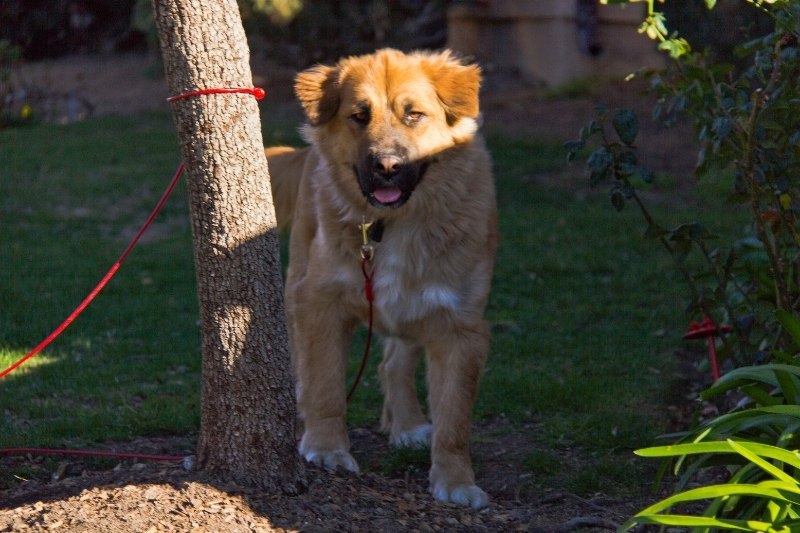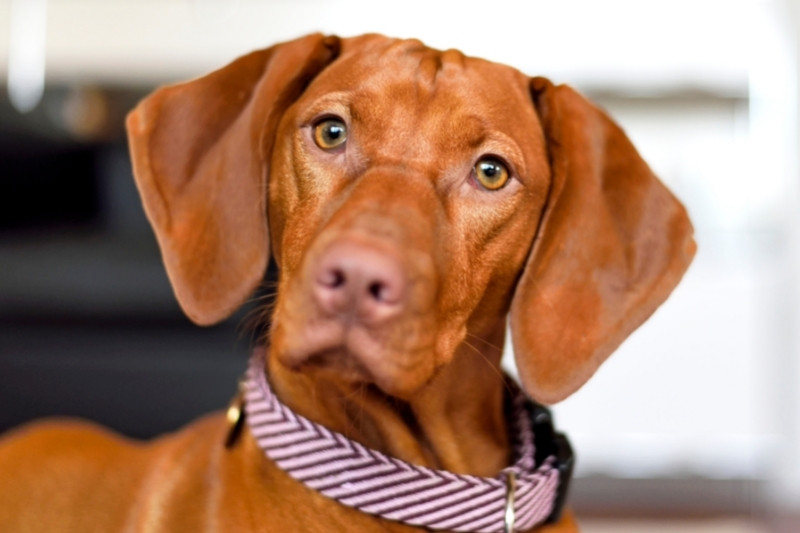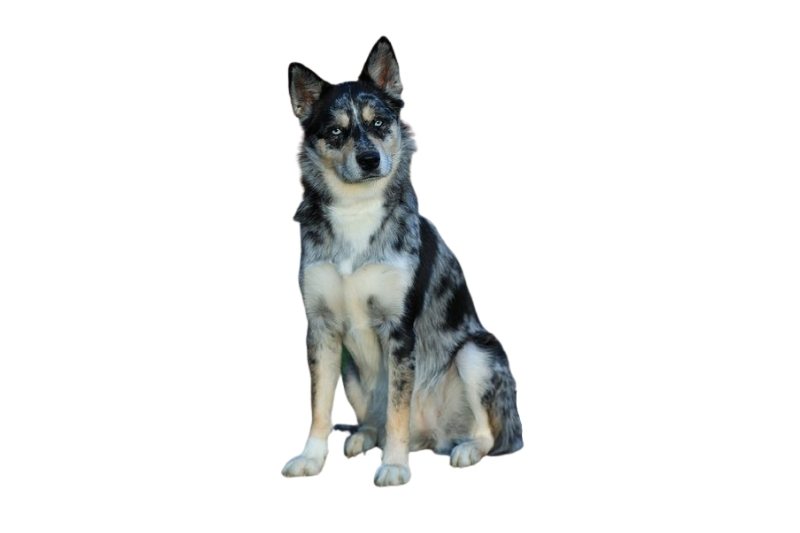Labrakita: Everything about this Akita-Lab Mix

In 2000, two working dogs, the Akita Inu and the Labrador Retriever, were crossed to produce the Labrakita, a new huge designer dog breed.
It's still a rare mix, and its popularity is skewed because this large breed can sometimes show a propensity to aggressive behavior. It is, however, clever, protective, and straightforward to train.
Like many other crossed breeds, Akita Lab puppies can acquire various features based on the gene combination they receive from their parents. So, as with all mixed breeds, it's impossible to determine which qualities from each parent dog, between Akita and Lab, will be dominant.
Nevertheless, whichever parent's traits are more dominant; you'll want to know more about the Labrakita, starting with its origin.
Origin and History
The Labrador Retriever
During the 1800s in Newfoundland, Canada, the Labrador Retrievers' oldest doggie ancestors were trained as waterfowl retrievers. After a long crossing with Newfoundlands, breeders got the magnificent Labrador Retriever we know today. In 1917, the American Kennel Club recognized the new sports breed once it arrived in the United States. It is the all-time most popular dog in the United States.
The Akita Inu
Akita is a Japanese hunting dog bred in the 17th century on the Japanese island of Honshu. Crossbreeding with huge breeds like the Great Dane helped them pursue and kill wild boar, deer, and even bears.
In the 1920s, Japan began a massive reform to bring back Akitas after they nearly went extinct. After WWII, this one-of-a-kind canine immigrated to the United States, becoming a committed security dog. This breed was recognized by the American Kennel Club (AKC) in 1972.
Appearance
The eyes of these designer dogs might be brown, hazel, or amber, while the nose can be black or brown. They have a long snout and a contemplative face, and they often appear to be smiling.
They have triangular-shaped ears situated high on the head; however, the ears could be floppy based on the dominant parents.
A purebred Akita has pointy ears, while a purebred Labrador Retriever has floppy ears, so hybrid dogs could either be a combination or a replica of the parent dogs.
Color
An Akita lab mix has a thick coat consisting of straight hairs that can be black, grey, brown, red, cream, fawn, white, pied, or brindle, and with short to medium in length. The Akita lab mix may wear a light or pale-colored mask on their face and have a light or white chest.
The Labrakita has a big, square head, a stout frame with powerful legs, and a long tail that may curl somewhat over the back or coil all the way around like an Akita Inu tail.
Size and Weight
The size of a Labrador varies based on the dog's age and gender. Its normal height is 22 to 25 inches (56–63.5 cm), and its usual weight is 55 to 80 pounds (25–36 kg). Depending on sex and age, an Akita Inu can weigh anywhere from 70 to 130 pounds (32 to 59 kg). The height ranges from 26 to 28 inches (66 to 71 cm).
The typical Labrakita mix stands between 21.5 and 28 inches (54.5 – 71 cm) tall. It weighs between 65 and 130 pounds (29.5 to 59 kg).
Temperament and Personality
Unlike the Akita parent, the Lab and Akita mix is not a self-sufficient creature. This devoted, family-oriented dog likes to be with its owner. If you allow it to be alone for too long, it may develop anxiety, grow disruptive, and begin biting or demonstrating aggressive behavior.
Because the Akita Labrador mixed breed is a cross between two complex temperaments, you're likely to get a one-of-a-kind dog.
Also, be aware that predicting Labrakita puppies' future behavior may be difficult while selecting your new companion. When it comes to outsiders, this protective dog might be violent, yet it is gentle with its family.
Given the numerous examples from both the Akita and the Labrador breeds willing to lay down their lives to protect individuals regarded as ‘pack' members, their progeny are likely to be incredibly loyal dogs as well.
Grooming
The Lab Akita mix is called your “furry friend” for a reason. The Labrador Akita's thick double coat sheds heavily once every six months.
Giving your Akita lab cross weekly brushing is the only way to avoid excessive shedding. Because this dog is unlikely to have a strong doggy odor, it won't need to be bathed on a regular basis unless it gets really dirty.
If you bathe this designer breed too often or use too much shampoo, the dog may get a dry skin condition.
Nail clipping must be done on a monthly basis, and examining the dog's ears for infections and ear mites should be done regularly as well.
Training
Because an Akita parent is a stubborn and independent dog, your Labrakita mix will initially require consistent and firm training as a puppy.
Fortunately, the Labrador-Akita mix is an intelligent dog that is usually fairly easy to train thanks to its Labrador DNA. That means they can make an excellent guard dog when it comes to strangers, yet a cuddly, friendly dog behind closed doors that can potentially get along well with small children.
With that being said, if you really want a good family dog or if you have very young children or other animals, it may be best to go for a pure Labrador Retriever instead of a Lab mix. This is because the Akita Lab mix can be quite large dogs and it can be difficult to predict their temperament due to the significant difference in personality between the Labrakita's parent breeds.
One thing that can cause an issue with the Labrakita dog is their stubbornness, so you'll need to come up with the proper mix of persistence, compassion, and positive reinforcement. Plus, if you give your Labrakita more stimulation through physical challenges and exercise, it will be more receptive to training.
Socialization
When it comes to socializing your Labrakita, you'll have to devote time to training your companion to welcome visitors and relatives.
Regrettably, it may not be a simple process. Having visitors or outsiders in its territory may irritate this dog, especially if they have more prominent Akita genes than Lab genes. But we should mention that some Akita Lab mixes can certainly learn to be a cherished family pet that will be exceptionally loyal and loving.
Because this breed has natural predatory instincts, it is not recommended for households with different pets, particularly cats. We don't want their instinctive prey drive kicking in with the family's beloved guinea pig.
Following slow and steady socialization with other dogs, however, could help your new friend enjoy the company of other canines.
Exercise
To keep fit, healthy, and content, the Lab Akita mix needs a lot of activity.
If these dogs do not receive enough exercise, they can grow obese and agitated; thus, they should have at least 60 to 90 minutes of intense movement per day. Playing at the dog park, trekking, swimming, playing at the beach, brisk walks, or a jog around the neighborhood once or twice each day are just a few of their favorite activities, and they are particularly thrilled to be out and about.
Akita Labs may develop negative behaviors such as nibbling on items and damaging property if they do not receive adequate exercise.
Food and Diet
The exact nutrition will be determined by the size, age, gender, and level of daily physical activity of the dog. The majority of these characteristics are determined by inherited parental genes.
To put it another way, you should give your dog food based on its appearance and needs to avoid autoimmune disorders or other health issues. We advise consulting your vet as well, just to be sure.
Health Problems
As holds true for other dogs as well, a Labrakita is most likely to receive genetic health problems their parents passed on to them. A few common health issues for the Labrakita are:
- Progressive retinal atrophy – A common eye illness in the Labrakita is progressive retinal degeneration, which damages the retinal nerves and can lead to blindness that comes with old age. Glaucoma and cataracts are other eye problems that can develop.
- Hip and elbow dysplasia – This is a bone condition that develops when a dog's joints do not develop properly. As a consequence, the joints may become irritated and unstable.
- Cranial cruciate disease – This condition causes discomfort and immobility in dogs when the cranial cruciate ligament in their knee ruptures.
- Bloat – Gastric dilatation-volvulus is an unpleasant gut swelling and twisting that occurs suddenly when the dog's stomach flips. It's a life-threatening condition that must be treated immediately if detected.
Life Expectancy
A Labrakita's average life expectancy is around 10 to 13 years.
Price
An Akita Lab mix puppy could range anywhere from $500 to $1,500.
The price may be influenced by lineage, parent bloodlines, birth order, gender, show vs pet quality, color, size, and other characteristics.
Remember to ask the breeder to give you the findings from the parents' health tests.
Keep in mind that you'll be spending another $500 or so on the new puppy's tests, vaccines, toys, collar and leash, crate, kennel, and anything else you might need.
Final Thoughts
The Labrakita designer cross-breed is a great blend of two completely different breeds. This clever and obedient dog is well-suited to active owners and households without other pets. If you socialize your Labrakita puppy well enough, you could end up with a much friendlier dog in the long run.
Regardless of which parent's DNA is more dominant in your Labrador-Akita mix, you will have a beautiful and unique best friend with this canine.

DogsPlanet.com is one of the main websites for dog owners, future owners and dog lovers. Our team of authors seeks to answer the questions that you frequently ask yourselves.








